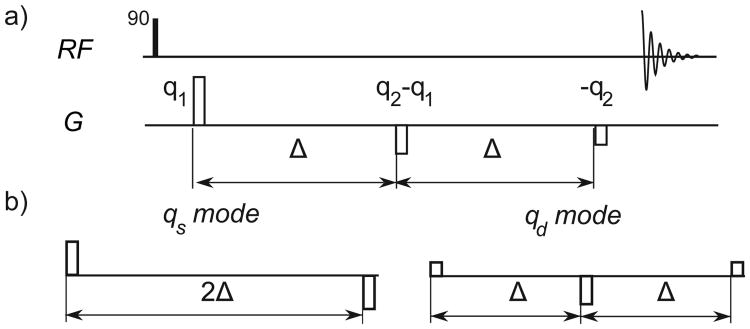Figure 1.
(a) The basic d-PFG pulse sequence with zero mixing time. An initial 90° RF pulse excites the spins, then three gradient pulses acting as 2 PFG encoding pairs imprint and refocus the spatial modulation of the spin magnetization across the sample, after which the signal is acquired. (b) The alternate encoding axes qs and qd are linear combinations of q1 and q2 that divide the total encoding period into segments of 2Δ and Δ respectively and are the principal signal axes.

